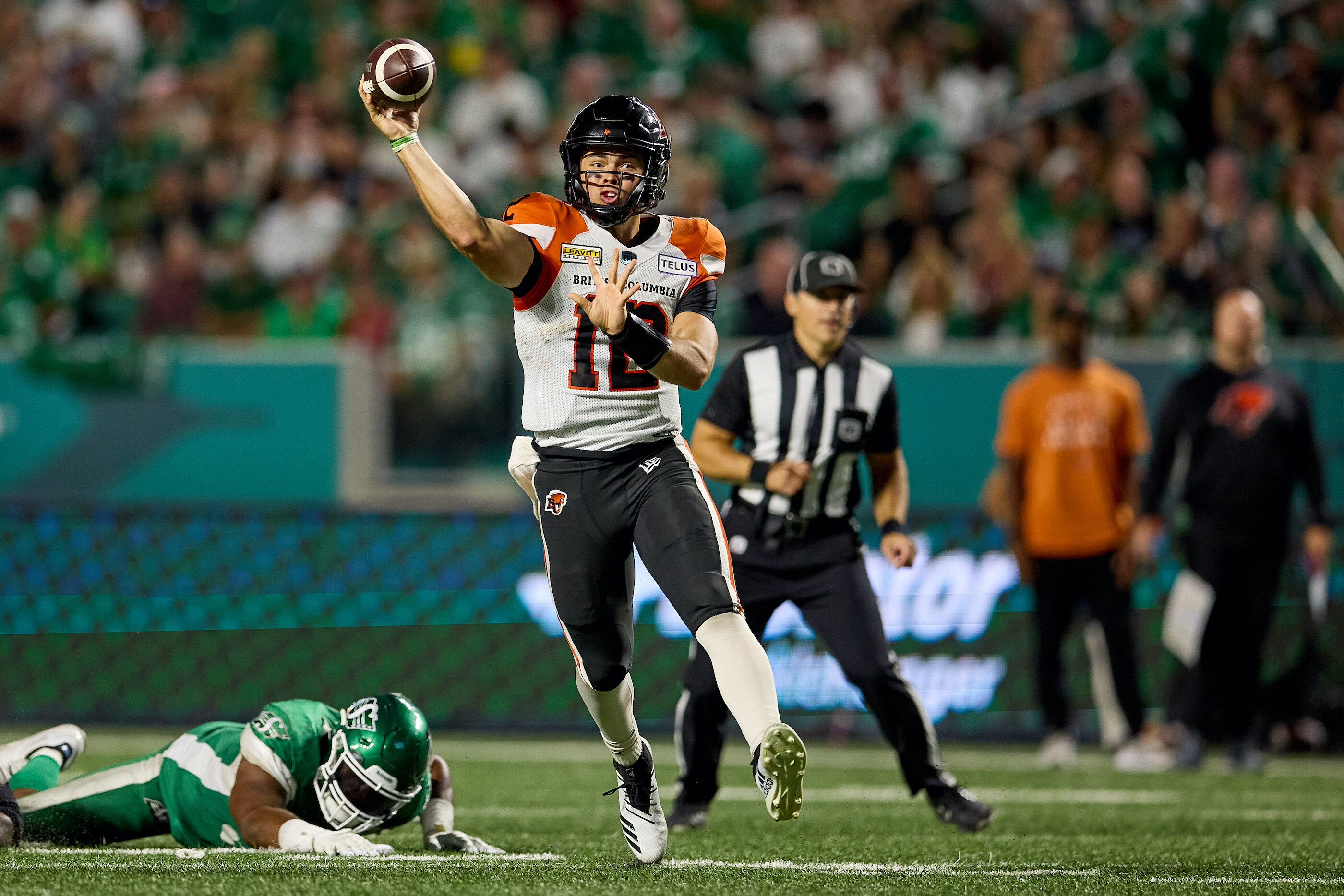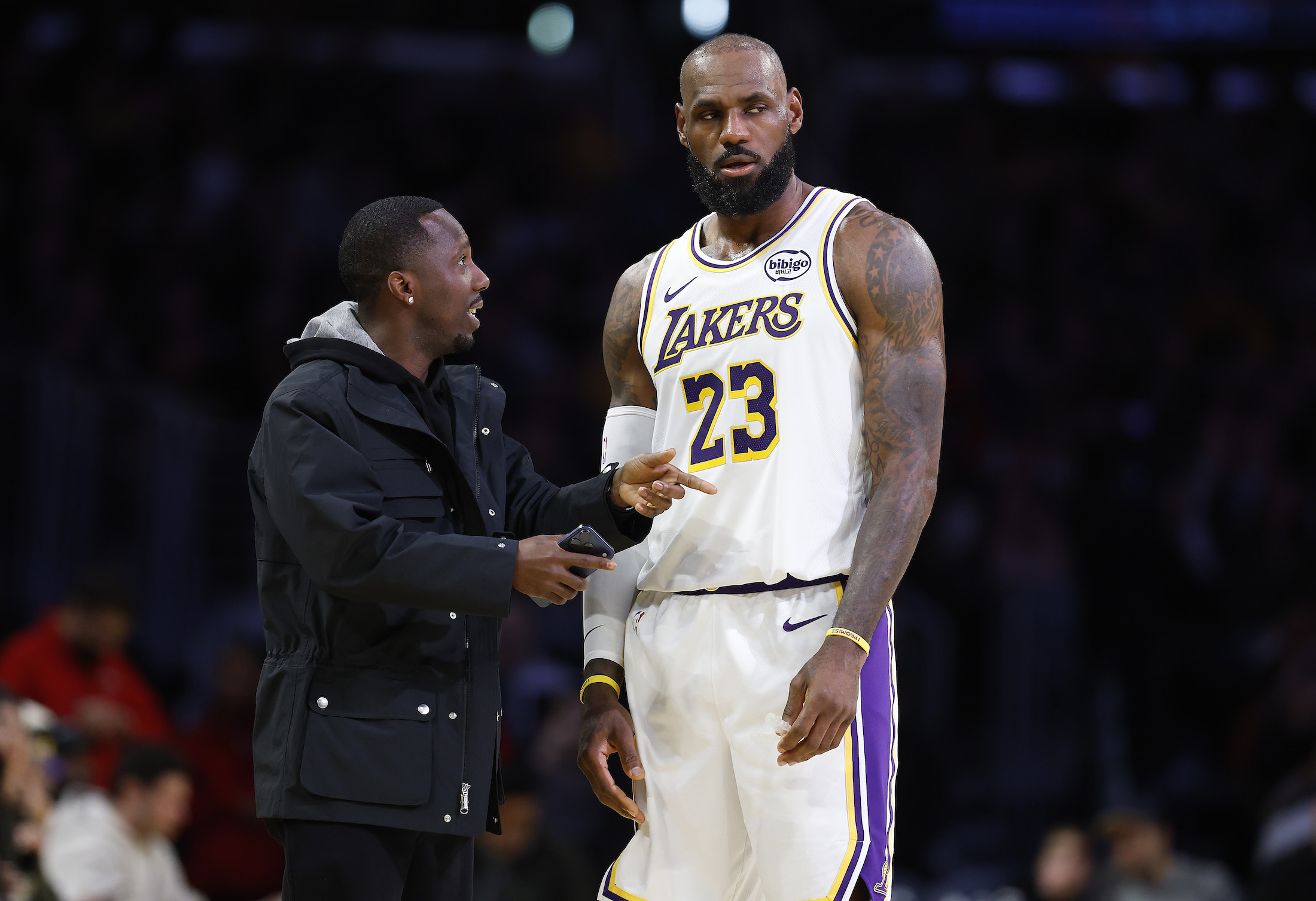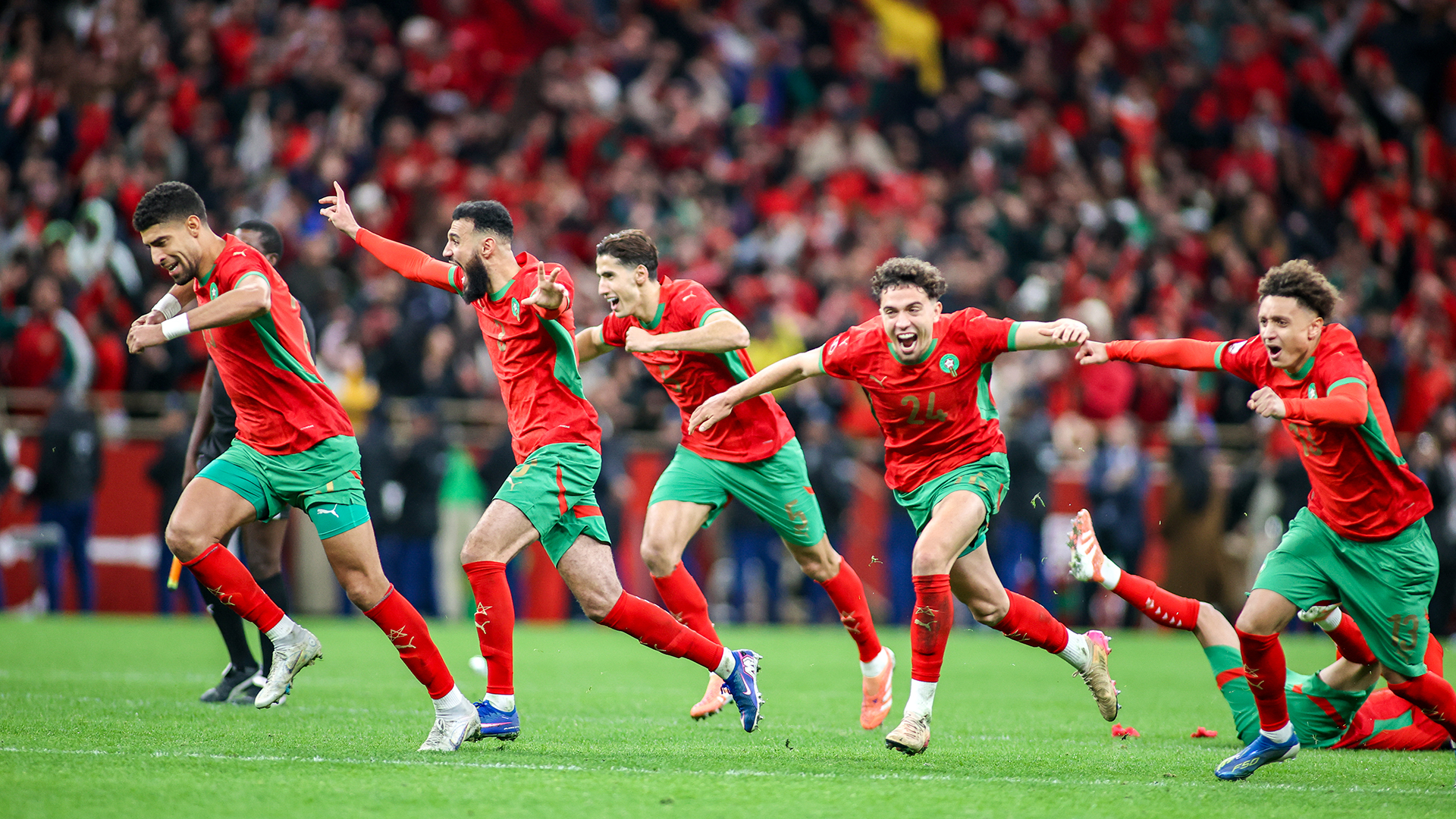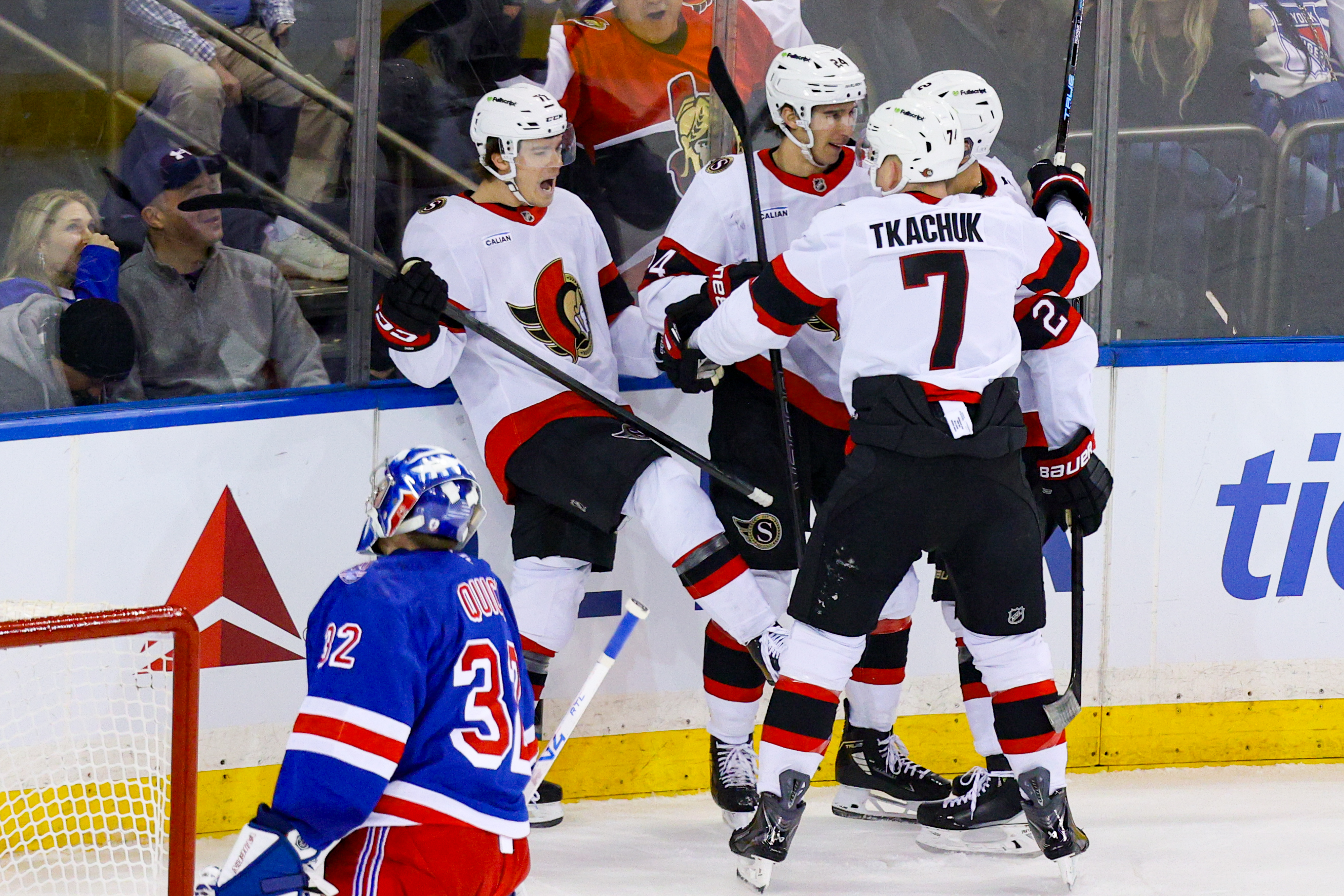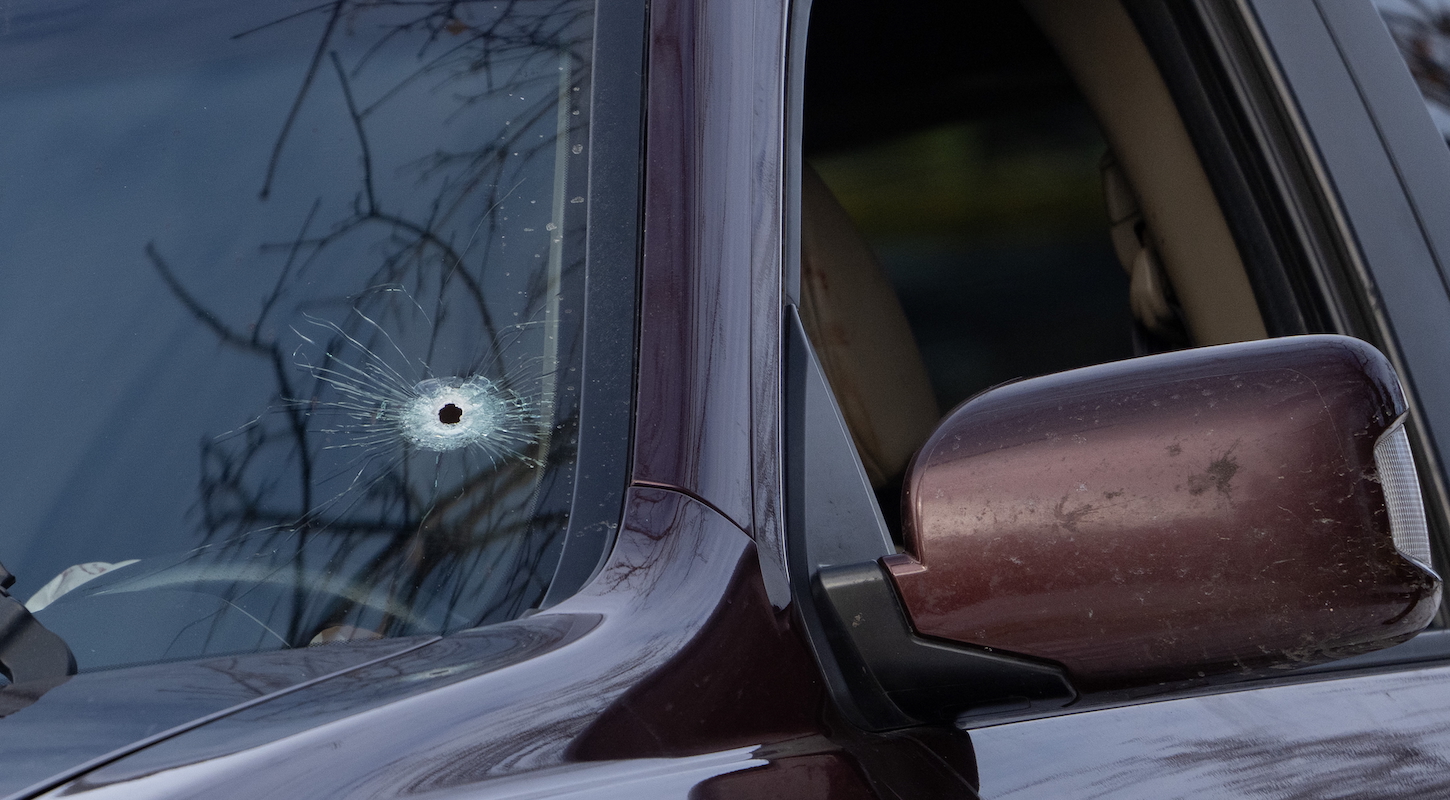Nathan Rourke, the best quarterback outside the NFL, sometimes seems like a figment of Canadian football’s imagination, as if everyone who loves the sport got together one day in a lab and designed its ideal avatar. Take the abstract nouns painted on the walls of college weight rooms: COMMITMENT. ATTITUDE. ACCOUNTABILITY. Mix them together with one of those breathless Don Cherry sermons. Rourke is what you get: a good Ontario boy from a great family, who really does just love the game and is the first one in and last one out every day. He gives polite, economical interviews. He uses no social media during the season. His college position coach won’t forget their first recruiting meeting; Rourke showed up with a notebook and pen.
On Thursday night, the 24-year-old starting quarterback for the BC Lions won the Canadian Football League's award for Most Outstanding Canadian, becoming the first quarterback in over 40 years to receive it. To longtime followers of the CFL, he's a dream realized. His emergence as a star this June told them that the old tenets might be shifting, that rules about who could be what in this league no longer mattered.
“All of a sudden, the CFL has been given this gift,” the Vancouver-based TSN broadcaster Farhan Lalji told me. “A Canadian quarterback who transcends every stereotype, everything around the league. And everybody wants to talk about it.”
Rourke plays ambitiously but decisively. His frame belies a certain physical stubbornness; the ultimate Rourke highlight might be the escaped tackle or the sack that wasn't. Mobile quarterbacks are often presumed to be flighty quarterbacks, and yet, Rourke's game is rooted in a keen spatial sense, the power to both see danger and, for a second, ignore it. He zips footballs into tight windows few scouts thought he'd hit as a mid-major prospect two years ago. Each week he played, it seemed, he broke a new league record: single-game completion percentage, passing yards for a Canadian, and then his own yardage record.
Watching Nathan Rourke is fun. Listening to people talk about him is fun, too. The way they do says a lot—about him, about them, and about the sport he ruled over this summer. The great Canadian quarterback they've waited for has finally arrived. The only question now is how long he plans to stay.
In July, on a whim, I took a vacation to British Columbia. To the long-distance Vancouver Canucks fan, this felt like a holy pilgrimage; vistas and skylines I knew only from broadcast B-roll suddenly became three-dimensional. It was a trip designed with almost no thought, spent aimlessly but curiously. One day, a bright orange poster hanging in the King Edward train station invited me to “roar like never before” at a BC Lions game. As it happened, my Saturday was wide open.
The Lions play their home games at BC Place, a well-kept if sterile indoor stadium downtown, three blocks from the Colosseum-inspired public library and across the street from a lively Italian restaurant. I’d spent the afternoon killing time by the leafy UBC campus, on the city’s western edge, and headed east to the stadium. But the route Hall of Fame running back Jon Cornish remembers—he played his nine CFL seasons with division rival Calgary—is the breathtaking drive north, on Cambie Street. Here, Vancouver comes closest to the “society if…” meme: great white slabs of steel and glass foregrounding the greater, whiter caps of the North Shore Mountains. It’s the rare view that leaves even a football player feeling small.
Four statues next to BC Place honor national hero Terry Fox, who ran thousands of miles across Canada to raise money for cancer research after losing his right leg to osteosarcoma—a full marathon each day for five months. A spiffy balloon arch framed the statues, marking the entrance to a pre-game tailgate. On this evening, it had been infiltrated: The Winnipeg Blue Bombers and their fans were in town for the big Week 5 matchup. As reigning Grey Cup champions and the CFL’s only other unbeaten team, the Bombers were eager to knock the upstart Leos down a peg.
In the CFL, “big market” means “small fanbase.” The Lions, Toronto Argonauts, and Montreal Alouettes have drawn the weakest crowds of late. Instead, revenue flows from the Canadian prairies outward. Attendance is best in Regina, Saskatchewan, a city of about a quarter-million. The BC franchise was once proud and beloved in Vancouver, even as recently as a decade ago. But for the last 10 years, the longtime Lions radio analyst Giulio Caravatta told me, the team had committed the sin of being uninteresting. John Hodge, a reporter for the Canadian football site 3DownNation, spent much of our conversation thoughtfully crafting CFL-to-NFL analogies. As for their place in the culture, he said, the BC Lions were not the Cowboys, nor were they the Jaguars. The match Hodge landed on was the Los Angeles Chargers.

Eighteen Canadian dollars put me at the very back of the lower bowl, in a section empty enough that I could prop my foot up on the seat in front of me, but crowded enough for people-watching. (Reported attendance would end up being 17,603, which sounds about right.) Only a second before the game began did I stop to take in the uncanny dimensions of the place. They gave me the groggy feeling I'd sometimes get when I was younger and I'd try on my mother's glasses for fun. It was Family Day at the stadium, and when the PA announcer said kids would get to run the field after the game, I briefly considered trying to pass for a tween. To be dwarfed by those 20-yard end zones—suddenly this seemed like the greatest and most important thing in the entire world. Family Days are wasted on the young.
Four rows down sat a family divided: a child with lion whiskers painted on his face, and his father, a Bombers fan whose parental instinct vanished whenever Winnipeg scored. This happened early and often. Janarion Grant, a small and explosive return specialist I remember dodging Big Ten gunners when he played at Rutgers, ran the opening kickoff back 97 yards for a Bombers touchdown. So by the time Nathan Rourke took the field, not more than 40 seconds into the game, he was playing from behind. He threw a few quick strikes to start; the bracing pace of a CFL offense was unmistakable. But not long after the Lions crossed midfield, his sixth attempt of the drive was picked off, and Rourke was left to make the tackle himself. The rest of the first quarter unfolded more or less that way. When it finally ended, Winnipeg leading 21-0, I feared for poor whisker boy’s spirit. A thin ribbon of sunlight streamed in through the overhead dome, casting strange shadows across the east end zone.
Rourke stands 6-foot-1, and he’s made to look smaller by the really, truly ginormous Canadian field, which measures 110 yards long and 65 yards wide. Larry Jusdanis, a Hamilton-based prep football coach and Rourke's former QB coach, played briefly in the CFL. He explained that Canadian rules place a different set of demands on quarterbacks. Under American rules, the offense can send a single man in motion along the line of scrimmage, needling the defense into showing its cards. The Canadian game allows unlimited motion, and while this keeps defensive backs on their toes, it complicates a quarterback's pre-snap reads. There are also narrower windows of opportunity. A 20-second play clock speeds up communication. And given three downs instead of four, Canadian offenses tend to be more pass-reliant.
The 43-22 loss would end up being the Lions' worst game of the season (just my luck), but you could see what everyone else saw in Rourke. After the early pick, he brought a lopsided game to life. Winnipeg had foreclosed just about every possibility in the first minute, but the mood in the stadium said otherwise. It was the same sedative power suggested by "never count out Touchdown Tom" or "too much time for Mahomes," the feeling that to this particular person, in this particular situation, a different set of rules applied and everything would be OK. Even the obnoxious Bombers dad whistled in approval when Rourke dropped back and slung a 66-yard touchdown late in the second quarter to get the Lions on the board.
.@nathan_rourke fires a BAZOOKA down field for a TD!#CFLGameday | @BCLions pic.twitter.com/avZPQIm7gR
— CFL (@CFL) July 10, 2022
Rourke's story could be viewed as one of overcoming the odds—the undersized Canadian kid, overlooked at every turn. But his is also increasingly the 21st-century athlete's story, one of hunting around for the tiniest competitive advantage. As a child growing up in Oakville, Ontario, Rourke adored Brett Favre. His parents have recalled him being transfixed, even as a 3-year-old, by an old tape of the Packers' win in Super Bowl 31. Hockey tends to hoover up Canada's best young athletes, but Rourke set his sights early on football. He saw a D-I NCAA scholarship as the best path to the NFL, and he didn't see his hometown as the best path to the NCAA.
Cornish, a BC native who played college football at Kansas and is now the namesake for a trophy given to the best Canadian player in NCAA football, remembered his own culture shock coming to the States. “There’s an element of massively different expectations of what football is,” he said. Rourke spent his senior year playing for a prep school in Alabama, where every quarterback is suddenly a small fish in a big pond.
When still no D-I offers came Rourke's way, he played a season at a junior college in Kansas, where, he told a columnist in 2020, away from the glamour of the college football industrial complex, "you really figure out if you love football or not." His 2016 season there won him two recruiting offers, and the one he accepted was from Ohio University, where he competed for the starting job with another sophomore, Quinton Maxwell, who'd started in the MAC title game the previous year. The Bobcats quarterbacks coach Scott Isphording told me Rourke was recruited to be an experienced backup. "We decided to play them both the first couple games, and it became pretty obvious that he was the better of the two," Isphording said. He told a story from Rourke's first summer on campus in 2017. The coach was showing a friend around the facility and ran into Rourke walking in with a bag of footballs over his shoulder as Isphording and his friend were walking out.
"Here it is, a Friday evening on a beautiful June day, when most college students, if they're on campus, are at a barbecue or some other social activity," Isphording said. "And Nathan Rourke was walking into the stadium to throw eight or nine footballs into a net and go pick them up and throw eight or nine footballs into a net again."
At Ohio, where his younger brother Kurtis now plays at QB, Rourke put up fairly ridiculous numbers in an RPO-heavy scheme in his three seasons as a starter. He won the inaugural Cornish Trophy in 2017 and won it again the next year, but his play largely went under the radar of the MACtion-ignorant. A shoulder injury and an inexperienced receiving corps his senior year obscured his arm strength. His timing wasn't great, either. The pandemic wiped out combines and showcases in the spring of 2020, so Rourke got no NFL bites, not in the draft or as an undrafted free agent.
The BC Lions took Rourke in the second round of the 2020 CFL Draft, 15th overall. "A lot of people here were like, 'Wow, they wasted a second-round pick on a quarterback?'" Caravatta told me. "I was talking to a few people around the league and they were saying, 'That was a reach on Rourke. They probably could have got him in the fifth or sixth round.'"
To decipher "wasted a second-round pick on a quarterback," it helps to understand the player economy in Canadian football. For a long time in the CFL, the best way to use a Canadian-born player was to hide him. The league’s roster requirements—known simply as “the ratio”—say each team must start seven Canadian nationals (12 players a side, remember) and keep 21 on the 46-man roster. Look from depth chart to depth chart, and you’ll notice patterns in how teams use their Canadians.
GMs see some practical value in this siloing. Distinguishing between "national" and "import" positions minimizes ratio disruption over the course of the season. But Canadians tend to find themselves in positions considered football's least valuable. This season, eight of nine teams featured all-Canadian interior offensive lines. On defense, Canadians end up often at safety, and rarely at defensive end. Cornish, the retired running back, described the popular sentiment when he was growing up: “You can be an offensive lineman, maybe linebacker. But skill position?" He scoffed. "No. You can have your Canadian wideout playing the Z—the furthest wide receiver out—who maybe gets one or two passes thrown his way.”
The ratio, I think, functions like the central organizing principle of Canadian football. It gives you something like the 2015 CFL Draft, where the first round went: OL, OL, OL, DB, DL, WR, OL, OL, OL. Generations of Canadians have lived by its rules, been steered toward—or away from—certain positions accordingly. It also feeds a number of anxieties about the Canadian game. One argument goes that the ratio dooms the league to mediocrity. Put the best players on the field, regardless of passport. The ratio cynics point to the gap between Canadian players coming up through the country's university sports system and their often more-developed NCAA counterparts. But everyone I talked to believed in the ratio's essential mission, to protect Canadian jobs and showcase Canadian talent in a Canadian league. It's what sets the CFL apart. When the league explored a merger with Dwayne Johnson’s XFL two years ago, losing the ratio and its myriad successes was what many fans feared the most.
Consider Andrew Harris of the Argos, a three-time league rushing leader and two-time Grey Cup MVP. Harris played junior football on Vancouver Island after high school before catching on with the Lions practice squad when he was 22. His career took off a couple of years later. Without the ratio, “they’re not looking at a Canadian junior football player from Nanaimo, when there’s a dime a dozen throughout the States that they can go choose from,” the tailback said in an interview last year. When he retires, he will no doubt end up in the Canadian Football Hall of Fame.
Harris and other Canadians at skill positions in the CFL are sometimes called “ratio breakers.” A ratio breaker’s value is expressed twofold: They play their important positions well, and they allow for an American import to play elsewhere. The term sounds both fraught—it has a whiff of "deserving" or "not just 'good for a Canadian'"—and kind of cool, evoking the image of a player facing down tradition and cracking it right open. As Cornish put it, they help "redefine what Canadians can do in the CFL."
Quarterbacks can't be hidden. This is wonderful if you have a good one and unfortunate if you don't. At any level, in any league, they are football's most reliable fount of star power.
What the CFL might have in common with the NFL at the moment is a relative drought. It could be just a temporary lull, brought on by a spate of high-profile retirements in the last couple of years and development lost during the CFL's pandemic-canceled 2020 season. Or it could be more existential, the consequence of expanded NFL practice rosters and new alternative football leagues. Either way, Lalji told me, “the current quarterback situation in the league is worst I’ve ever seen.” Which is to say, ratio-breaking Nathan Rourke couldn't have arrived at a better time.
“It would be a gripping story if he were American,” Hodge said. “Fans are looking for: Who’s going to be the next 5,000-yard quarterback? Who’s going to be the next 40-touchdown quarterback? Who’s going to be the next megastar who really takes this league to the next level? Who’s going to usher in the next great generation of CFL quarterbacking? And the fact that Nathan Rourke is Canadian—it just elevates the story.”
That fact is why no one could believe it last winter, when the Lions announced the retirement of their veteran starter Michael Reilly and almost immediately named Rourke his successor. "I thought they were crazy," Hodge said. "And I think most people in the league thought they were crazy. And when they would say that he was their starter, they'd have this like, weird, smug smile. You'd kind of go, I feel like these guys know something that we don't. Otherwise they've lost their collective mind."
Hodge's wariness reflected less on Rourke than it did on the unsatisfying history of Canadians at the position in the CFL. The great Russ Jackson led his Ottawa teams to three Grey Cup wins in the '60s, but all these years later, he'd somehow remained the touchstone of Canadian quarterbacking. I spoke to a few Canadian former quarterbacks who said a quirk of the ratio was to blame: Until recently, quarterbacks were carved out of the ratio entirely, so that teams had little incentive to draft and develop Canadian quarterbacks. Why waste a pick on a player who wouldn't even count toward the quota?
Jusdanis remembered attending the CFL Combine, where someone suggested he play slot receiver or defensive back. (Being told to switch to safety is the single defining experience of the Canadian quarterback.) Caravatta also played QB in the CFL, but what got his foot in the door was his foot: He was signed as a punter. It was an intensely stressful experience for him, feeling that he had to prove himself capable as a Canadian, and also that American quarterbacks didn't. This was a second explanation offered to me for the lack of Canadian CFL quarterbacks, that the league's mostly American coaches held Canadians to a different standard. "I remember Jimmy Kemp, who was a quarterback for Saskatchewan at that time, he threw two interceptions in late," Caravatta said. "And I thought to myself, had I gone in at the end of the game and thrown two interceptions, I don't know if I would have been let back on the bus."
After Caravatta made his last start for the Lions, in 1996, it would be nearly 20 years before another Canadian quarterback started a regular-season CFL game. That quarterback, Brandon Bridge, retired from football in 2020. But before he did, he successfully lobbied for an amendment to the ratio. Under the newly adopted rules, Nathan Rourke counts as one of the Lions' seven Canadian starters. (He still doesn't count as one of the 21 Canadians on the active roster, a measure meant to guard against teams padding their rosters with Canadian third-string QBs who won't see playing time.)
For a younger generation of quarterbacks, the old stereotypes have begun to fall away. The University of Waterloo's Tre Ford became the highest-selected Canadian CFL quarterback in 40 years this past May, when the Edmonton Elks drafted him eighth overall. Though Rourke's résumé—playing high school football in Alabama and D-I football in the States—might more closely resemble an American import QB's, Ford's path to the CFL suggests that doesn't have to be case. His family didn't have the funds for a prep school that would attract NCAA recruiters, and he thrived instead in Canadian USports, winning the Heisman-equivalent Hec Crighton Trophy in his final year at Waterloo. Ford said he'd heard the usual stuff about Canadian quarterbacks, but that it didn't weigh much on him now. "When you get out there on the field, you don't look around and say, 'Oh, he's American. He's Canadian,'" he told me recently. "You're just like, that's the 'Will' linebacker. That's the 'Mike' linebacker. You're just out there trying to make plays."
The Lions hadn't lost their minds. Rourke torched a weak Edmonton defense in his first week as a starter, and then did the same to a more respectable Toronto defense two weeks later. He'd spent the pandemic layoff and his rookie season as Reilly's backup retooling his mechanics and working on his throwing velocity. The arm that had seemed almost incidental to his game when he rushed for 49 touchdowns at Ohio was now a legitimate tool. Nonbelievers surely gave in by Week 10, when Rourke mounted an enormous comeback in Calgary, shaking off two early interceptions to win 41-40 after being down 30-18 at the half. His last drive of the game, to get into range of a game-winning field goal, was the sort of cool, amnesiac performance everyone craves from young quarterbacks. And it couldn't be ignored that on the other side was Bo Levi Mitchell, a two-time Grey Cup champion QB once considered the class of the CFL. "This is the CFL equivalent to Patrick Mahomes in his first year as a starter, early in the year, going into Foxborough and beating the Tom Brady Patriots," Hodge said. "This is the moment where you're like, OK, this is not a fluke. This is not a mirage. This kid is real, and this kid is dangerous."
Watching Rourke, Cornish felt certain that he was watching something special. “There’s certain times you see people that are in a class of their own," he said. "It’s sort of like, 'Why can’t my quarterback throw that accurately? Why can’t my quarterback get away from all these defensive linemen?'”
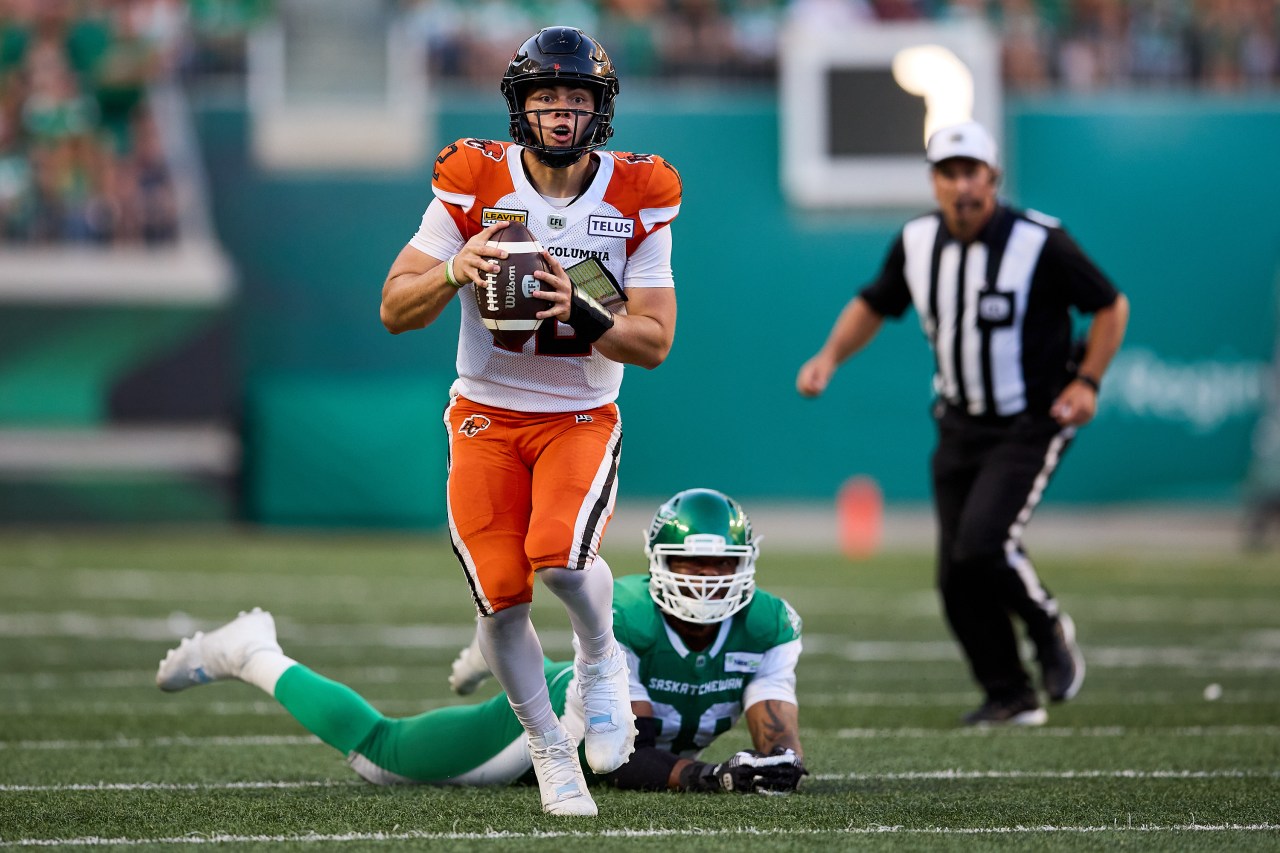
Those first few weeks of the season were an incredible storm of narrative satisfaction and national pride. The TSN broadcasters called their new star "Kid Canada." My first brush with Rourkemania came one of these frenzied days in June, when I turned on hockey-obsessed Vancouver sports radio, and heard all this talk about the CFL.
The problem was one only noticeable after the games: Rourke dreaded talking about himself. I wasn't able to speak with him for this story, but people who know him described him as businesslike, private, and hyper-focused. It wasn't until the third year of Rourke's college career, Isphording said, "that we spoke about things other than what his read progression was on a certain pass play."
A typical postgame press conference with Rourke scanned almost like a doomed game of charades, two parties on two different wavelengths trying hard to see the world each other's way and never succeeding. He winced through questions pointing out how well he'd played or wondering about his legacy and tried, futilely, steering things back toward the team. “It’s not easy," he said, after a win against Ottawa in late June. "You guys are constantly reminding me and telling me how great I am. That’s difficult sometimes, when the reality is that this is a great team, and the team is the one who deserves all respect and all the hype.”
"Does the hype drive you in a way? Like, can it give you energy?" a reporter asked.
“No,” he stammered, about three or four or 800 times. “No. No—I—that’s—no. I—no. It’s not something that fuels me at all. I’d rather not even deal with it if it was up to me.” But then he employed the language of self-improvement. The hype was something “I have to adjust to” and “get better at, in terms of understanding.” That’s all it was, just one extra read to make on the way downfield.
Rourke disliked his celebrity, but that didn't matter. Everyone liked him. TSN producers in Toronto, where the CFL is least important, asked Lalji for more Nathan Rourke content. "It will get the type of traffic and likes and retweets that an NHL story would, and that a CFL story hasn't for the last five or six years," he told me. At 3DownNation, the Rourke effect was not quite the boost they'd seen during Johnny Manziel's brief and sour CFL tour in 2018, but stories about Rourke were guaranteed to outperform stories about any other CFL quarterback. Reviled Toronto Sun columnist Steve Simmons even offered his own cheery endorsement of Rourke, in a June column comparing the young quarterback to Russ Jackson, Steve Nash, and Tom Brady.
Depending on how you see it, the myth either suffered or expanded one weekend in August. The Lions were winding down a Week 11 win over the Saskatchewan Roughriders when Rourke felt a “sliding" sensation in his right foot, like his big toe was on some different plane from the rest of them. The team announced he would undergo surgery for a Lisfranc sprain, an injury likely to keep him out for the rest of the season. His was an absence with enough capital-I Implications that someone asked CFL commissioner Randy Ambrosie about it during his state-of-the-league address in early September. "I think this is a short-term setback for him, it's a short-term setback for the league," he said.
It was fair to wonder if Rourke would ever play for the Lions again. He had been so dominant in his first year as a starter that he seemed like he might soon have better suitors than the CFL, where he made about $70,000 on his rookie contract. NFL teams reportedly had interest in signing him after the season ended. Rourke had been on pace to win Most Outstanding Player and break Doug Flutie's single-season passing touchdown record, and to this point, history was Rourke's only real competition. In nine games, through Week 11, when he was injured, he led CFL quarterbacks in passing touchdowns (25 to the next-best quarterback's 18), passing yards (3,281 to the next-best quarterback's 2,506), and completion percentage (79.1 percent to the next-best starter's 69.8), while averaging a league-high 10.5 yards per attempt. Rourke's stats stayed frozen for nine weeks while he recovered, and he still ended up finishing second in the league in passing touchdowns.
Rourke had already received his first NFL opportunity a year ago, though he called it “a huge waste of time on both ends.” The New York Giants invited him to their rookie minicamp in 2021 but tried him at receiver, a position he had never played. “I think the injury could spook some teams. But in my opinion, he is absolutely good enough to be an NFL backup to-day.” Hodge said. "Not a oh, he can develop over a couple years and be a—no, I think he could be a competent NFL backup quarterback today." Having watched a healthy and appropriate, thank you very much, number of Detroit Lions preseason games, I was inclined to agree.
One NFL team’s pro personnel director thought Rourke’s excellent early-season production gave him a chance at a QB3 or QB2 role next year, though the Lisfranc injury remained the “most immediate issue.” There was a second issue in Rourke’s size, which a different team’s pro scout suspected would prevent “significant NFL interest.”
“The NFL is pretty arrogant in its evaluations,” said Lalji, recalling a tweet he’d seen about the 2018 NFL Draft and the now–peculiar-looking order in which quarterbacks were taken. Kurt Warner, ascending through the league undrafted? “That doesn’t happen. That’s not normal. Because the NFL generally won’t allow it to be normal.” The history of Flutie or Warren Moon or Jeff Garcia making the transition from CFL starter to NFL starter is mostly just that now: history.
Another pro personnel executive hadn’t heard much NFL buzz about Rourke in early November but had been encouraged by CFL contacts to watch him. The executive hadn’t done so yet; some teams wait to scout the CFL until December, closer to the date in January when free agent players can sign. But at least one team was already watching. Word from a fourth pro personnel department was that Rourke was “a baller” and “definitely on every team’s radar.” On Tuesday, ESPN's Adam Schefter reported that Rourke planned to work out for NFL teams.
Rourke spent the weeks of recovery swimming and watching movies, mostly bad ones. (“There’s a lot of garbage out there,” he said.) In the final week of the regular season, as if he hadn't satisfied enough of sports media's hankerings, he made an unlikely return to play. The Lions had weathered his absence, and though he didn't look his usual mobile self in a meaningless quarter against Winnipeg, Nathan Rourke was back just in time for the playoffs. He waved aside thinly veiled NFL questions, claiming not to worry too much about "the bigger picture." There was a West semi-final game against Calgary ahead. Still, the bigger picture loomed.
Everyone defined the bigger picture in their own ways. How, exactly, Rourke figured into it depended on who you asked. "He's the poster boy of the league. They should be promoting him," Jusdanis said. "They need that Tom Brady of the league, right?" This was the picture drawn one way: the quarterback fronting a fading league that desperately needed him in it. “No pressure, kid, but you’re not only here to save the BC Lions," Jamie Dodd, guest-hosting the popular morning show Halford & Brough, said in early August. "Nathan Rourke might be saving the CFL." The sentiment rang familiar to this well-traveled veteran of sports media hype cycles, which nearly always, in retrospect, seem ill-fated and unfair.
Hodge suggested that the long-term health of the CFL and the NFL dreams of Rourke weren't incompatible. He told the story of New York Jets backup Chris Streveler, "the Taysom Hill of Canada" in his two seasons playing for the Bombers. Streveler's preseason play with the Jets this year had produced its own "Streveler effect," at least as measured by traffic to 3DownNation. "I think Nathan Rourke will be great for the CFL whether he's in Canada or whether he's in the NFL," Hodge said.
The day I spoke with Lalji, the CFL announced its list of “Division All-Stars,” voted on by media members, head coaches, and fans, and often a trigger for contract bonuses. Half the selections made no sense. Harris, the star running back, had been named an All-Star, though he hadn’t scored a touchdown all season. (He injured his ankle and only played eight games.) Calgary’s offensive line, the basis for the Stampeders’ league-best run game, had been entirely snubbed. That evening, after people began to ask questions, the CFL removed the list from its website and apologized. The votes had been incorrectly tabulated. One joke online went that the recount was meant to distract from a different mini-crisis: Less than three weeks before Grey Cup weekend, the league still hadn’t announced the halftime performer.
This is the weird tragedy of sports, how often the world’s most impressive people are asked to flatter its least competent. A similar thought struck McLeod Bethel-Thompson, the superbly named and slightly kooky Argos quarterback, after his team won the East Division final on Sunday. “The leadership in this league needs to do better, man," he told a sideline reporter, who hadn't really asked about this at all. "We got really good, really amazing players.”
For all the talk of Rourke's capacity to save the league, no one could quite say what that meant, what a "saved" league might look like, or whether it was a reasonable thing to expect of a shy 24-year-old who may not be around much longer. But everyone agreed it was a fair question. "There's so many layers to the pressure that you talk about, because it's not just carrying the mantle to give the league a star, it's what you mean to the football ecosystem all the way through the pipeline," Lalji said, adding that Rourke's success as a Canadian quarterback would inspire young Canadians too. To the skeptic, there was something reassuring about Rourkemania. It felt mostly earned and organic, not a wave that had carried him into the CFL, but something that floated his way.
Sunday afternoon’s West Division final was played the way all football should be, before a rowdy Manitoban crowd, a film of snow clinging to the field. It was those Winnipeg Blue Bombers on the other side again. By this point, they’d taken a villainous shape in my mind. The Bombers were the unyielding machine ever in the protagonist’s way.
A dramatic widow’s peak and narrow-set eyes gave their Ohio-born quarterback Zach Collaros the face of someone cast to play a QB in a daytime soap. While I was watching old Collaros clips, YouTube resurfaced a grainy local news segment from 12 years ago, when he was in college at Cincinnati. The video, titled “Attorney: ‘Zach Messed Up,’” showed a judge scolding Collaros for using a fake ID and then blowing off the diversion program. He looked exactly the same.
And yet, Collaros had lived several lives in the time since. He began his CFL career tapped to be the franchise quarterback in Hamilton. Then came the injuries and the benching and the concussions and the trades. Nothing really went according to plan; so died the star of Zach Collaros. Except, given one final chance to clear his name in Winnipeg, he seized it. He won Most Outstanding Player and back-to-back Grey Cups, ending the franchise's 29-year drought. A month after signing an extension in Winnipeg, the league's highest-paid player was on his way to a third; he’d played just well enough for the Bombers to take the West Division title. They kept the game on the ground, driving the offense through the young Winnipeg-raised running back Brady Oliveira. BC's momentum died in the noise of the crowd. Only special-teams flukes made the final score, 28-20, look so close.
Collaros didn't have to do much. On the other side of his long, strange redemption arc, the 34-year-old veteran looked totally at peace. Nathan Rourke was the future, but Collaros and the Bombers were the searing present.
— BC LIONS (@BCLions) November 14, 2022
The future stood for a while at the edge of the field, looking on while the Bombers celebrated in the cold. He hadn’t lost the Lions the game—that had been a team effort—but he hadn’t played well either. The studio analysts wondered if it was the cold weather or his injured foot or his mechanics or the crowd or the bright lights of Winnipeg or the pressure. Where had the story gone wrong? Searching for explanation is pointless, but it does remind you how much stuff is always going on. Stuff is my industry, and it's a fun one, but sometimes the stuff gets piled atop people who didn't really want or need more stuff. Every week, the stuff has to be tuned out or channeled into something else, at least until there's no place left to put it.
Now, for Nathan Rourke, there was only blank space on the schedule. Would he be playing for the BC Lions next year? "I don't know," he said in the postgame press conference. "I'd sure like to be, the way that I'm feeling right now." Before the sober reflection, back out on the field, he lost his composure for the first time all season. In the arms of a teammate, he began to cry. The camera cut away from the pomp and lingered on the young quarterback, still the star of the show.
Kalyn Kahler contributed additional reporting.
